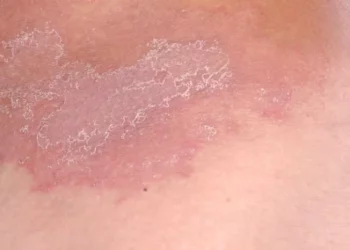ingworm, despite its misleading name, is not a worm but a fungal infection that affects the skin, scalp, and nails. Scientifically known as tinea, it is caused by dermatophytes, a group of fungi that thrive on keratin, a protein found in skin, hair, and nails. This article explores the specific impact of ringworm on hair, discussing its symptoms, diagnosis, treatment, and prevention.
Understanding Ringworm
Ringworm is highly contagious and spreads through direct contact with an infected person or animal, or by touching contaminated objects such as towels, clothes, and surfaces. The fungi responsible for ringworm are typically classified into three genera: Trichophyton, Microsporum, and Epidermophyton. When these fungi infect the scalp and hair, the condition is referred to as tinea capitis.
Symptoms of Ringworm in Hair
Ringworm can cause a variety of symptoms in the affected area, particularly the scalp and hair. Recognizing these symptoms early is crucial for effective treatment and prevention of further spread.
1. Circular Patches: One of the hallmark signs of tinea capitis is the appearance of circular, scaly patches on the scalp. These patches may be red or gray and often have a raised border, giving them a ring-like appearance.
2. Hair Loss: Infected areas of the scalp often experience hair loss. The hair within the infected patches may break off at the scalp, leaving a stubbly appearance or bald spots.
3. Itching and Irritation: The infected areas can become itchy and inflamed. Scratching the infected scalp may lead to secondary bacterial infections, exacerbating the problem.
4. Black Dots: In some cases, the hair shafts break off just above the scalp, leaving black dots. This is a characteristic sign of Trichophyton infection.
5. Kerion Formation: In severe cases, a large, swollen, and painful lesion called a kerion may develop. Kerions are pus-filled and can lead to permanent scarring and hair loss if not treated promptly.
Diagnosis of Ringworm in Hair
Accurate diagnosis is essential for the effective treatment of ringworm. A healthcare professional will typically use the following methods to diagnose tinea capitis:
1. Clinical Examination: A thorough examination of the scalp and affected areas is the first step. The characteristic appearance of ringworm lesions often provides initial clues for diagnosis.
2. Wood’s Lamp Examination: A Wood’s lamp, which emits ultraviolet light, can be used to examine the scalp. Certain species of Microsporum fungi fluoresce under this light, aiding in diagnosis.
3. Microscopic Examination: A sample of the infected hair or scalp scraping may be examined under a microscope to identify the presence of fungal elements.
4. Fungal Culture: Culturing a sample in a laboratory can confirm the specific type of dermatophyte responsible for the infection. This method is highly accurate but can take several weeks for results.
Treatment of Ringworm in Hair
Treating ringworm in hair requires a combination of antifungal medications, proper hygiene, and preventive measures to stop the spread of infection.
1. Oral Antifungal Medications: Because tinea capitis affects the hair follicles, topical treatments alone are often insufficient. Oral antifungal medications such as griseofulvin, terbinafine, itraconazole, or fluconazole are commonly prescribed. These medications penetrate the hair shafts and eradicate the fungus from within.
2. Topical Antifungal Treatments: While oral medications are primary, topical antifungal shampoos or creams may be used to reduce surface fungal load and prevent the spread of infection. Ketoconazole or selenium sulfide shampoos are often recommended.
3. Hygiene Measures: Maintaining good hygiene is crucial to prevent the spread of ringworm. Regular washing of hands, hair, and scalp, as well as laundering of contaminated items, is essential.
4. Avoiding Sharing Personal Items: Infected individuals should avoid sharing combs, brushes, hats, towels, and bedding to prevent spreading the infection to others.
SEE ALSO: Why Is Ringworm So Hard to Kill?
Prevention of Ringworm in Hair
Preventing ringworm requires a combination of personal hygiene practices, environmental control, and awareness.
1. Personal Hygiene: Regularly washing hair and scalp, particularly after exposure to potentially contaminated environments, can help reduce the risk of infection. Educating children about not sharing personal items is also important.
2. Environmental Control: Keeping living environments clean and disinfected, especially in households with pets or in communal settings like schools and gyms, can help minimize the risk of ringworm spread.
3. Regular Vet Checks for Pets: Pets, especially cats and dogs, can be carriers of dermatophytes. Regular veterinary check-ups and prompt treatment of any infections in pets are crucial for preventing zoonotic transmission to humans.
4. Early Detection and Treatment: Prompt recognition and treatment of ringworm infections can prevent widespread outbreaks. Parents and caregivers should be vigilant for early signs of infection in children.
Complications of Untreated Ringworm in Hair
Untreated ringworm can lead to several complications, some of which can have long-term effects on hair and scalp health.
1. Permanent Hair Loss: Severe or untreated infections can cause scarring alopecia, where the hair follicles are permanently damaged, leading to irreversible hair loss.
2. Secondary Bacterial Infections: Scratching the itchy, infected areas can introduce bacteria into the skin, leading to secondary infections that require additional treatment.
3. Spread of Infection: Ringworm can easily spread to other parts of the body or to other individuals. Preventing the spread is essential to avoid further complications.
4. Psychosocial Impact: Hair loss and visible scalp infections can affect an individual’s self-esteem and social interactions, particularly in children and adolescents.
Conclusion
Ringworm significantly affects hair and scalp health, causing symptoms like hair loss, itching, and inflammation. Early recognition, accurate diagnosis, and effective treatment are vital for managing the infection and preventing complications. Maintaining good personal hygiene, ensuring environmental cleanliness, and seeking prompt medical attention can mitigate the impact of ringworm and protect both individuals and the community from this contagious fungal infection.
Ringworm in hair, though a common and treatable condition, requires vigilance and proactive management to ensure optimal outcomes and prevent long-term damage. By understanding the nature of ringworm and adhering to recommended preventive measures, individuals can safeguard their hair and overall health against this persistent fungal adversary.
Related Topics:



























